|
| Days Of Glory |
|
|
| A TRIBUTE TO ALL EARLY DAY AVIATORS |
"Keywords" aviation, aviation history, early aviation, marine aviation, early pilots, test pilots, lockheed, lockheed
history, lord beaverbrook, airplane crashes, general westover, mint canyon crash.
"Harry Ira Downes"
In Days Of Glory
&
Early Aviation
My father was a man of few words, but he believed in getting the job done and doing it right the first time. As a young man
his dream was to become a Pilot and fly all over the world. Few of us ever get to see our dreams come true and to do everything
we ever wanted to do, but I truly believe that he did. During 1937 and 1938 while loaned out by the Lockheed Company as private
pilot for Lord Beaverbrook, the British Industrialist, publisher, and cabinet member of Ministry of Aircraft Production, before
World War II, he flew all over Europe.
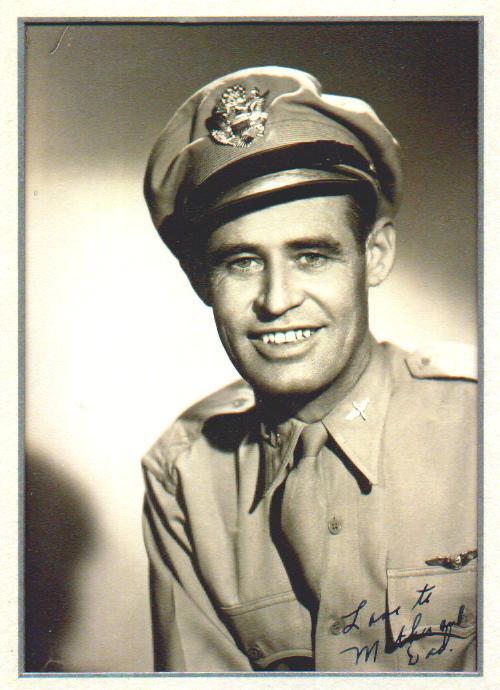
I know that he had a high security clearence in the Military and did some flying that he never talked about. He did tell
me once that he used to carry a group of men out into the desert (here in the U.S.) where they were doing some testing, and
on the return flights he would have to search the aircraft and pick up all scraps of paper after everyone got off
and before anyone ealse could come on board. The time was during the early 1940's, the men were Scientist and were very careless
about writing down notes and then wadding up the paper and throwing it on the floor of the plane. It all started on 17 Jan
1925 when he enlisted in the Army in order to get his Wings and to become an Aviator. He lost his Army Flight Instructor and
had to enlist in the Marine Corps on 22 May 1926 in order to complete his flight training. He got his wings on 1 Nov 1926.
Dad was an Enlisted man while in the Marines, not an Officer, and when he became a Flight Instructor at Penscaola, Florida
during the year of 1929 that fact gave him a lot of problems with some of his students that were Officers.

(This is Dad's class of 1929. He is the one all the way to your right with his hands in his pockets. The aircraft is
a F4B.)
(N. A. S. Pensacola mid to late 1920's, Marine Pilots.)
(Boeing F4B)
Before becoming a Flight Instructor he served as a Pilot with the Marine Expeditionary Force at Camp MacMurray, Hsin
Ho, China during 1927-1928. These were the first Marine Pilots to fly in China. At first their flights were not well accepted,
and very restricted by the Chinese. By giving air dimonstrations, air shows, and rides to certian Chinese Officials the Marines
were soon able to show that that they were not a threat to the people and could be of help to the Warlords should the need
arise. This gave the Marines more freedom in the skies over China.

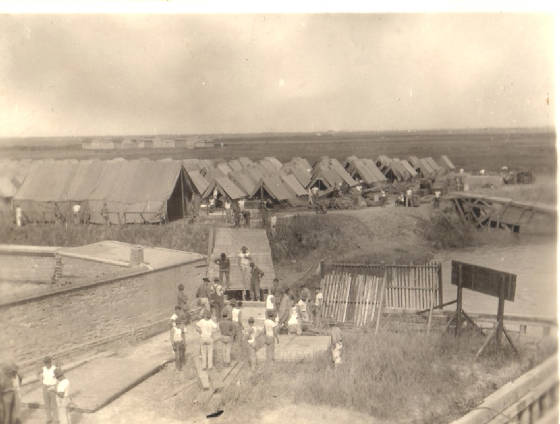
(Camp MacMurray, Hsin Ho, China)
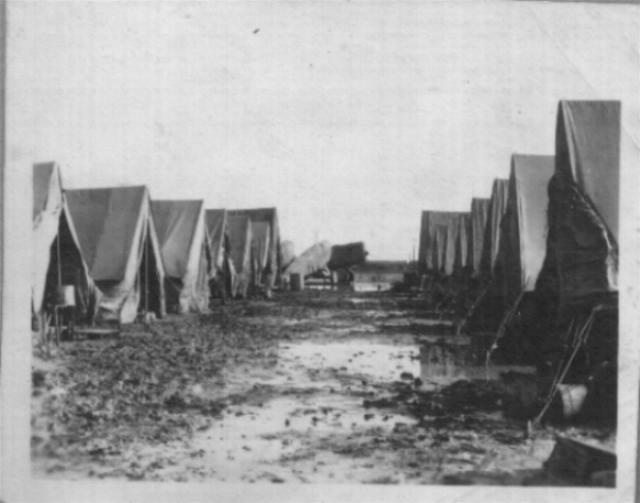

(This is a Loening Amphibian.)
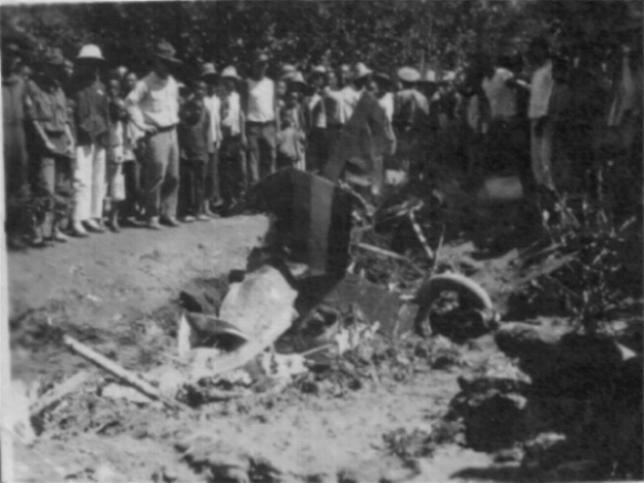
(In the first 12 months of deployment, Marine planes flew 2,343.2 hours during a total of 3,731 flights. There were 5 crashes
but with no injuries to the crews. On 10 Nov 1927, the Marine Corps' birthday, the 3rd Brigade arranged for a special review.
Fourteen planes were flown from Camp MacMurray to put on an air show for the Chinese at Tientsin. One incident that occurred
during the air show has long been remembered by thoes who witnessed it. During an exhibition of stunt flying, Captian James
T. "Nuts" Moore made a low pass over the crowd and then went into a breathtaking roll, lost the wings from his aircraft, bailed
out,and parachuted into a moat in front of the stands. Most spectators, unaware that it had not been planned, thought it was
the best show they ever saw. What you are looking at above could be the remains of the aircraft that James T. Moore flew at
the air show.)
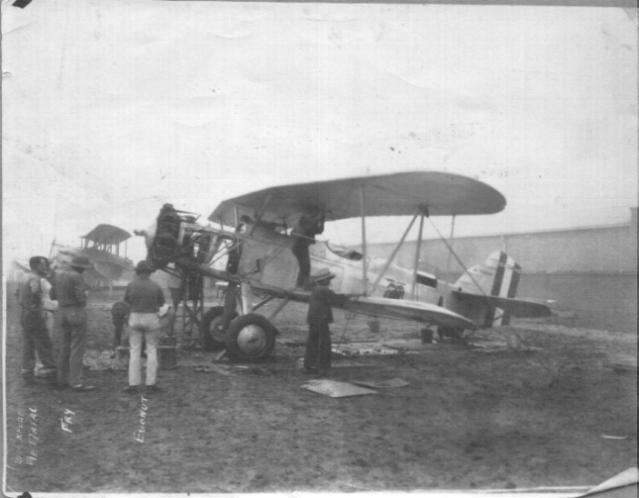
(Aircraft maintenance and pre-flight 1927-28 China. The aircraft is a F8C-3 Helldiver. The next aircraft over is
a Loening OL-6 Amphibian. Invaluable experience in connection with reconnaissance and observation missions was gained in
China in 1927 and 1928 when Marine squadrons attached to the 3rd Marine Brigade covered more than 8,000 square miles on daily
recon flights. In 18 months of operations, about 3,800 flights were made.)
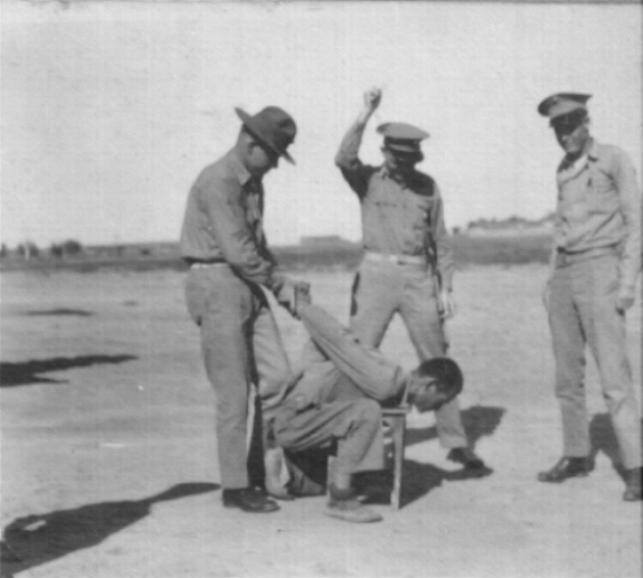
(Some terrible things were going on in China during this time. In the photo above a chinese friend allows 3 Marines to
demonstrate how a public execution would be done. "If a Prisoner was lucky enough to just have his head cut off it was like
an act of mercy. Many of the Prisoners were dismembered while still alive. There are pictures that I won't put on this site."
My father who is one of the Marines in the picture was witness to many such executions. Chinese civil war began with the Shanghai
Massacre (Apr 12 1927). Kouminang army forces led by Chaing Kai-Sheck attacked their Communist allies in Shanghai and several
other cities, executing 5,000 to 6,000 of those captured.)
(Troop Train, China 1927.)
(China's answer to the War Wagon 1927)
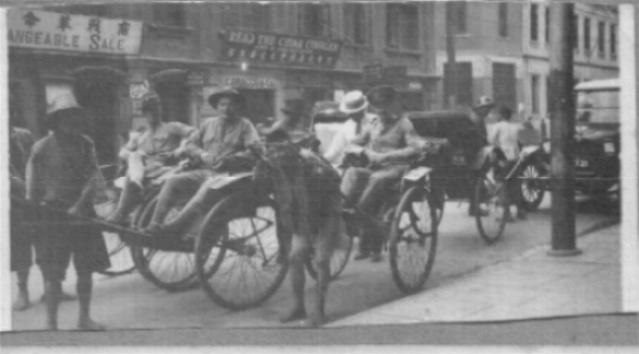
(There was always a little time for some R & R in China.)
PERSONAL HISTORY (As written by my father)
Harry Ira Downes, born 24 Jul 1905 at Marion, Illinois. Graduated Frankfort Community High School, West Frankfort, Ill.,
June 1923. Enlisted U.S. Army 17 Jan 1925. Graduated as "Aerial Photographer" from Air Services Tech. School at Chanute Field,
Ill. in July 1925.
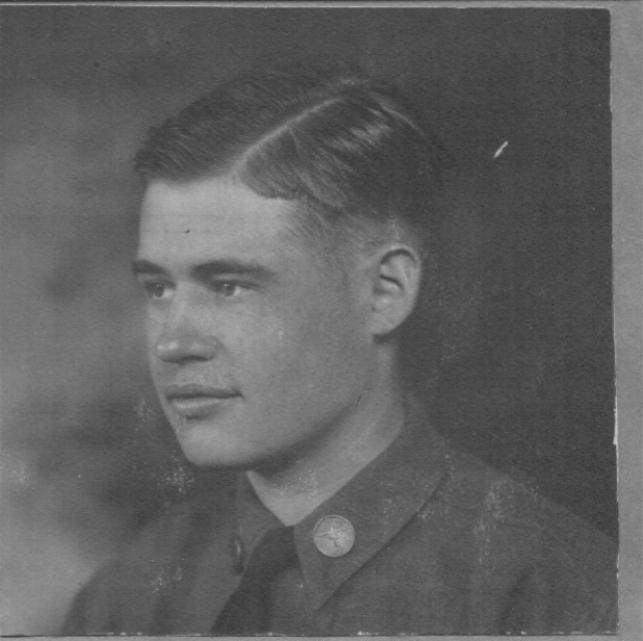
Was a Flying Chadet in U.S. Army Air Services at Brooks Field, Texas, from Sept. 1925 to Feb 1926 receiving about 60
hrs solo flying. Was washed out of class because Instructor become injured and there were no provisions to allow a cadet to
join a succeeding class. Was discharged from U.S. Army as Flying Cadet on 9 Feb 1926. Enlisted in the U.S. Marine Corps 22
May 1926.

(Fighting Squadron #10 was assigned to Camp MacMurray at Hsin Ho, between Tientsin and Shanghai, China.)
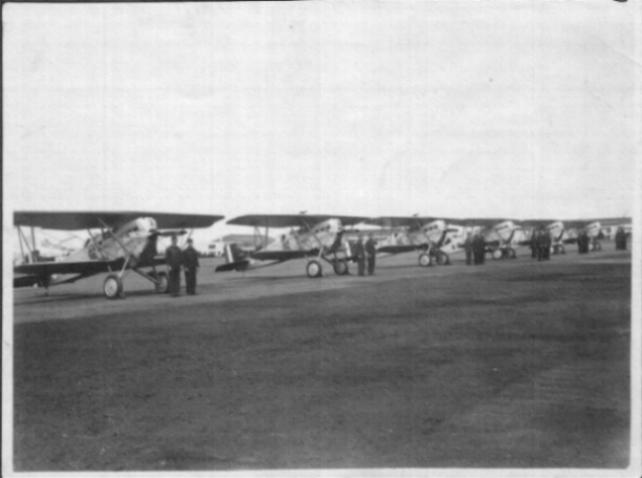
(Marine Pilots. My guess as to the aircraft type would be a Boeing FB-1. This picture was also taken at Hsin Ho, China
1927-28. From the formation standing in front of the aircraft I would say that it was July 1927, the day Brigadier General
Smedley Darlington Butler, holder of two Medals of Honor, chose to inspect the new base. Butler was in charge of the Marine
Expeditionary Force in China.)
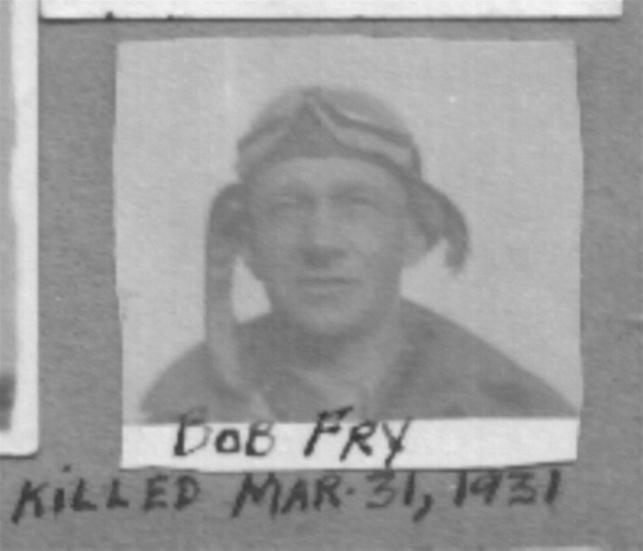
(Robert G. Fry had been a Marine Pilot in Hsin Ho, China 1927-28. He had flown with Fighting Squadron #10 as seen above. At
the time of his death Fry was flying for Transcontinental Western Airlines. He was flying a F-10 Fokker (looked like 3 Engine
Ford) between Kansas City and Wichita Kansas when the aircraft crashed during bad weather killing all on board, 6 passengers
and 2 pilots. One of the passengers was the famous Notre Dame football coach Knute Kenneth Rockne. Rockne's death was felt
all the way around the world. Rockne was so well known and loved that this crash caused major changes to be made that would
forever change aviation history. If you type in "Knute Rockne Crash" in your search engine you will find some very interesting
information. That is if you are interested in Aviation History.)
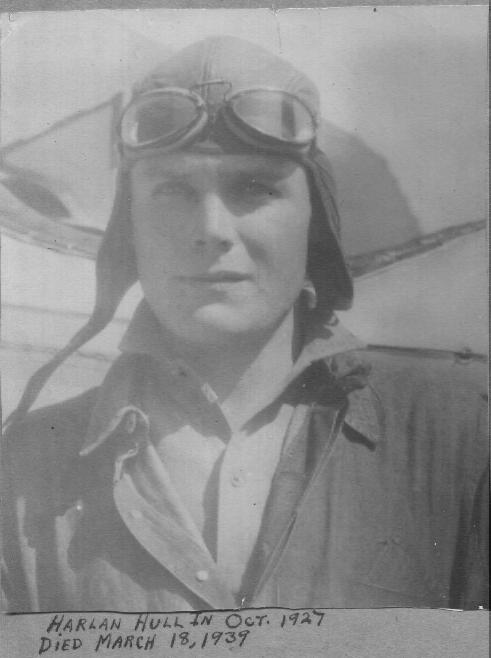
(Hull 1927, just before he graduated from flight training school at Pensacola, Florida along with my father. At an airshow
at Flagstaff, Arizona.Hull was one of three Navy pilots who performed at the Flagstaff airport during the opening ceremonies
in 1927. The airport was so ill sited near a mountain, it later closed.
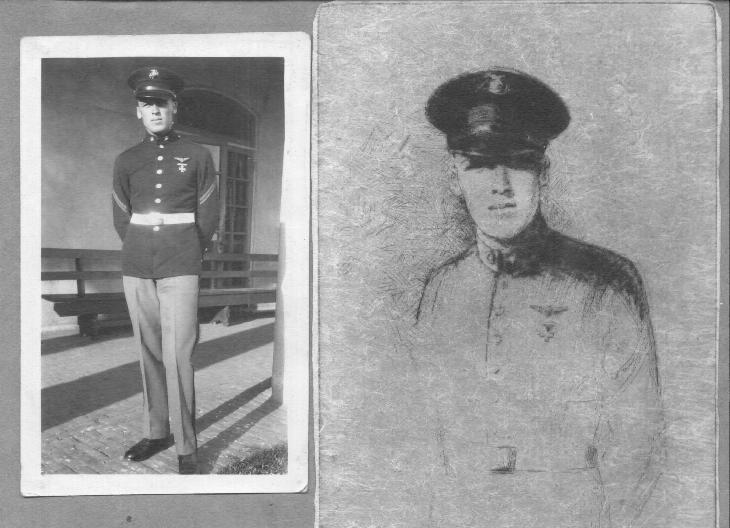
(Harlan Hull, Marine Pilot, died 18 Mar 1939. At the time of his death he was the Chief Test Pilot for TWA.)
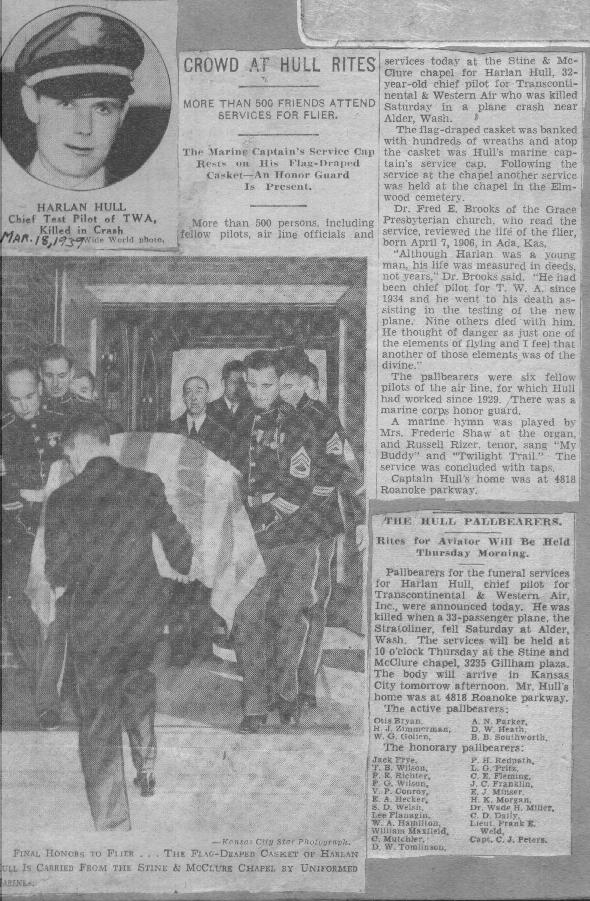
(On this catastrophic flight, Harlan was in the cockpit as an observer, when one wing broke off from overstress. It
had a stiff wing, and that was when designers learned a wing had to be able to flex in rough air.)
Designated Naval Aviation Pilot # 914-28 on 1 Nov 1926 after graduation from Naval Flight School, Pensacola, Florida. Served
as piolet with U.S. Marine Expeditionary Force in China from 26 Feb 1927 to 22 Nov 1928. Served as Flight Instructor
at Naval Flight School during entire year of 1929. Received excellent character discharge at Naval Air Station, San Diego
from U.S. Marine Corps on 20 Apr 1930 as Staff Sergeant. Commanding officer Ross E. Rowell, Major, inserted on discharge under
remarks: Service honest and faithful. A well trained and experienced aviation pilot. Served in volunteer Marine Corps Reserve
as Staff Sergeant from 21 Apr 1930 to 20 Apr 1934.
Hired by Western Air Express in Apr 1930. Served as Co-Pilot on Amarillo to Tulsa and Amarillo to Dallas run from 4 Apr 1930
to 30 May 1931 in Fokker F-10 transports.
(Fokker F-10, -12 seats
-118 mph
-13,000 lb. max. gross take-off weight
-765 mile range
Went into service in 1929. Wings were built out of wood.)
Received air transport license # 5239 on 15 Feb 1929. Received airplane and engine mechanics license # 4672 on
15 Feb 1929. Served as Capt. on Las Angles to Avalon, Catalina for W.A.E. from 1 Jun 1930 to 31 Mar 1931 in Loening Amphibians.
(Loening Amphibian landing at Avalon, Catalina 1930's.)
(Two seven passenger Loening amphibian biplanes were used on the half-hour flight to Catalina Island from Wilmington
Harbor and Long Beach.)
PAGE 2 DAYS OF GLORY
|

